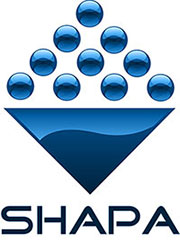Explosion Safety
Explosion Safety Revisited
It is now nearing fifteen years since SHAPA published their Practical
Guide for Suppliers and Operators of Solids Handling Equipment for
Potentially Explosive Dusts, or in short, compliance with ATEX. The
guide demonstrated good practice and was endorsed by a foreword by HSE.
After a long gestation period, kicking off in 1992, with the “users
directive” following a little later in the form of 1999/92/EC,
regulations were gradually implemented, with July 2006 having been set
for final compliance.
The ATEX Directives (ATmosphere EXplosiv) were innovative, as dust
explosions had not been tackled comprehensively until then. Most
explosive atmosphere regulations had been concerned with electrical
equipment and indeed these were used as the model for the developing
ATEX Directives.
Finally, the EC Directives formed the basis of the coming safety
legislation, the “manufacturer’s directive” 94/9/EC which has been
superseded by 2014/34/EU in 2016
Over the past months The SHAPA technical committee have reviewed the
information available and updated the advice given in the two
publications within the SHAPA technical library available at
https://www.shapa.co.uk/technical.php these being Compliance with
Legislation Implementing the Atex directive and an Atex PowerPoint
presentation. The main changes for manufacturers of equipment are, The
EC declaration of Conformity must be replaced by an EU declaration of
conformity, the EC examination certificate must be replaced by an EU
examination certificate, importers are now required to put their names
and addresses on the products, and manufacturers, importers and
distributers responsibilities for traceability and markets surveillance
are more precisely defined.
In addition to the above regulations in 2016 IECEx standards ISO/IEC
80079-36 and ISO/IEC 80079-37 were published, meaning that for the first
time non-electrical equipment for use explosive atmospheres can achieve
IECEx certification. IEC 80079-36 is the standard which covers the basic
method and requirements for non-electrical equipment and IEC 80079-37
covers non-electrical equipment for types of protection ‘constructional
safety’ (“c”), ‘control of ignition sources’ (“b”) and ‘liquid
immersion’ (“k”).
Information on all of these changes and how best to apply them to your
products, projects and installations can now be accessed through the
updated documents within the Shapa technical library at
Atex-Updated and
Atex Certification of Equipment .
ATEX compliance is obviously just one of many legislative and technical
subjects that must be considered within the design of any materials
handling, storage or processing installation
and it has long been the aim of the Association to furnish member
companies with clear, concise information to promote the science behind
every successful process. The Technical and Marketing committees strive
constantly to educate and inform for the benefit of all in our industry.
Please email info@shapa.co.uk or visit
www.shapa.co.uk for further
enlightenment. or call 01904
373040
Visit www.shapa.co.uk or
email info@shapa.co.uk to
discover more benefits of membership or to find technical partners for
your next project.





















